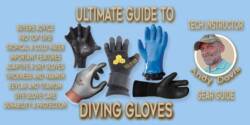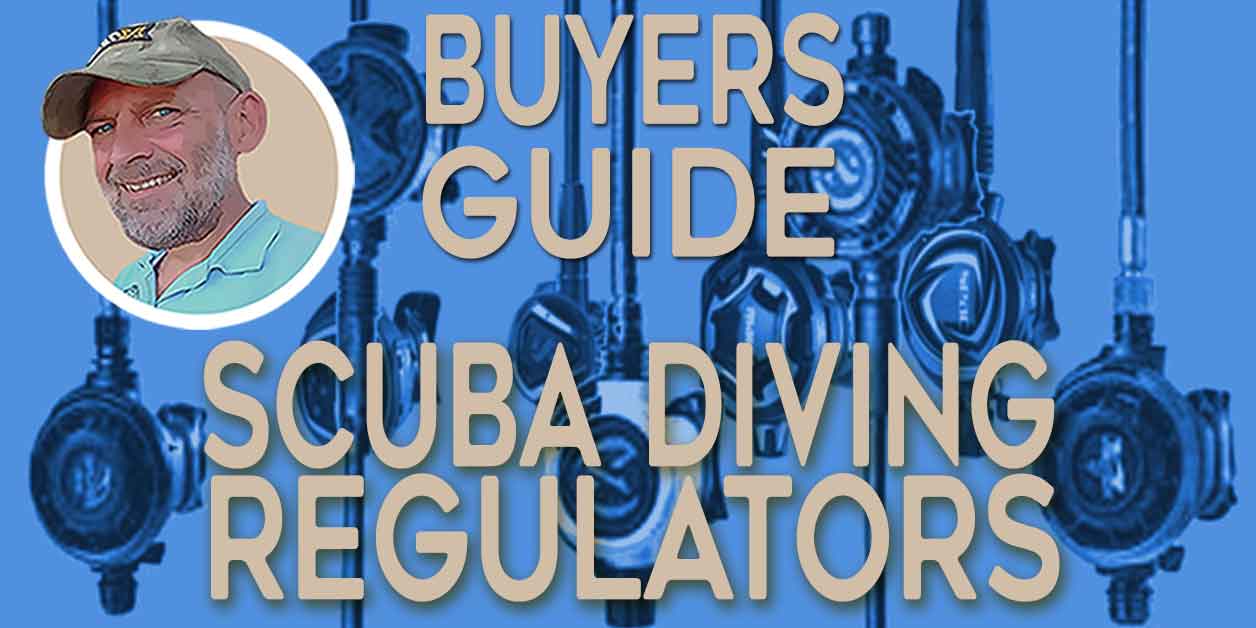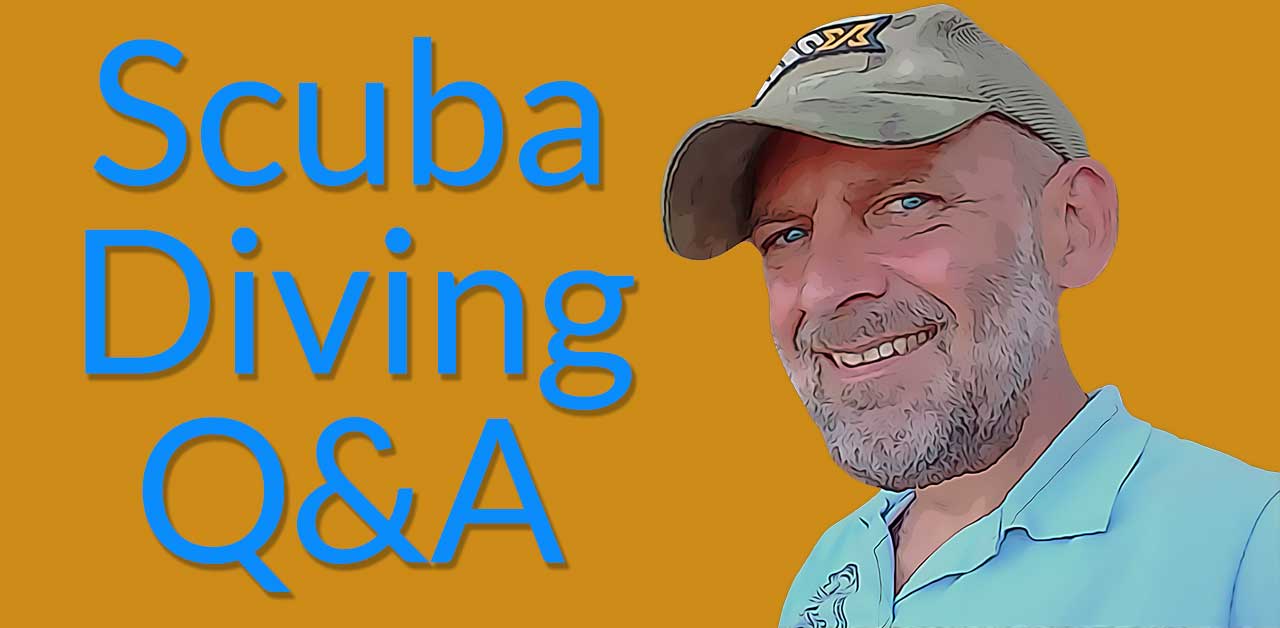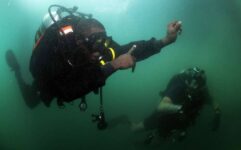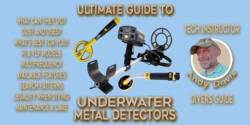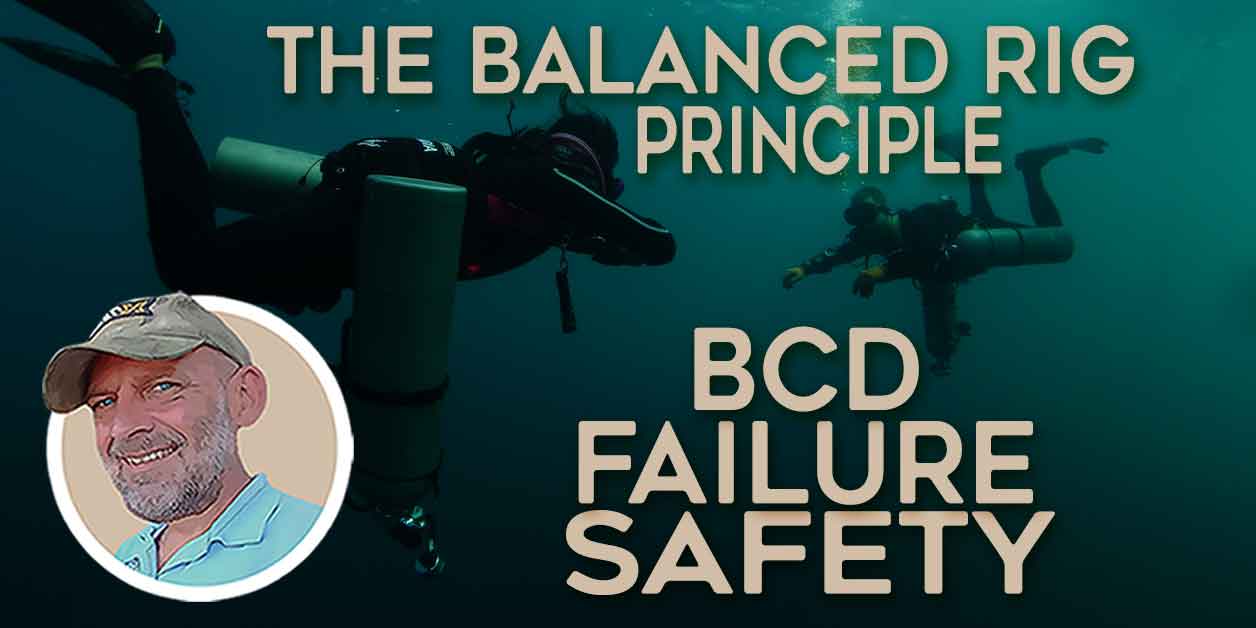The Ultimate Guide to Full Face Masks for Scuba Divers
Ever find yourself yearning for a less claustrophobic experience when diving? Imagine scuba dives where your vision remains crystal clear, your breathing is natural, and effortless communication with your dive buddy is possible. If so, full face masks (FFM) may be the solution you are looking for.
In the past, full-face masks were primarily associated with specialized areas like public safety diving, commercial diving, and underwater film crews.
However, in recent years, these masks have found a place in mainstream recreational diving due to their advantages in terms of a broader field of vision, ease of breathing, the ability to breathe through your nose, and the option to use communication systems.
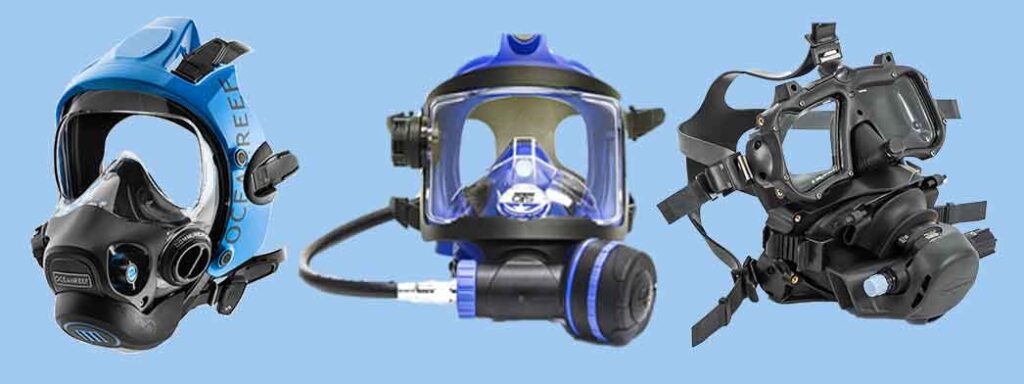
What is a Full Face Mask for Scuba Diving?
A full face mask combines the functions of a diving mask and a scuba regulator 2nd-stage into a single unit, creating a sealed, air-filled, enclosure around the entire face.
This differs from the conventional recreational setup, where the mask and regulator are separate pieces. In a regular recreational setup, the mask seals only the top half of your face. It creates an airspace around the eyes to permit normal vision and includes the nose to allow mask equalization.
Unlike the traditional regulator with a mouthpiece that has to be held in your mouth, a full face mask simply feeds gas into the whole face mask. This means that you can breathe normally through either your mouth or nose.
Advantages and Disadvantages of Diving Full Face Masks
Full face masks have a number of distinct advantages and drawbacks for divers. It is important to consider both the positives and negatives when deciding whether a full face mask is something you want to include in your diving.
Advantages of a Full Face Mask for Diving
- Communication: One of the standout features of FFMs is the ability to integrate wired or wireless communication systems. This opens up channels for divers to communicate seamlessly with each other and surface support.
- Protection: With less of the face exposed to water, FFMs keep divers drier and warmer. Additionally, this design safeguards the eyes, nose, and mouth from potentially contaminated water, enhancing overall safety.
- Easy Breathing: Full face diving masks redefine breathing comfort underwater. In comparison to conventional masks, the breathing experience with a full face mask is seamlessly effortless, both inhaling and exhaling.
- Wider Vision: The incorporation of curved safety lenses in many full face dive masks amplifies the diver’s field of view. With a rectangular shape and rounded corners curved around the head, these lenses enhance visibility, allowing divers to perceive their surroundings more comprehensively.
- Fit: FFMs boast large sealing surfaces, accommodating different face shapes. This forgiving design ensures that most divers can expect an effective, dry fit. Even with a less-than-perfect seal, positive pressure in most FFMs will leak air bubbles but keep water out.
- Facial hair creates less problems with full face masks. Covering the entire face, these masks are an ideal choice for bearded divers.
- Comfort: Bid farewell to jaw fatigue. FFMs eliminate the need to bite down on a mouthpiece throughout your dive. Furthermore, FFMs often allow divers to breathe naturally through the nose, adding another layer of comfort.
- Minimized Fogging: Fogging is a common issue with diving masks, but high-quality full face masks perform well in this respect. With constant airflow and integrated ventilation systems, the inside of the mask stays relatively condensation-free, minimizing fogging and ensuring clear visibility.
- Safety: In the unfortunate event of a diver losing consciousness, the FFM remains securely in place, retaining airspace over the nose and mouth until help arrives. This critical safety feature adds an extra layer of protection to your underwater adventures.
Disadvantages of a Full Face Mask for Diving
- Size and Weight: Acknowledging the downsides, FFMs are far more bulky and heavy than conventional scuba masks.
- Cost: Quality comes at a price. FFMs can be 3-4 times more expensive than regular diving masks, usually in the $600 to $1600 price range. Adding communication systems to a full face mask raises the cost even further.
- Difficult to Clear: Clearing a full face scuba diving mask can be more time-consuming due to its larger internal volume. The increased volume means that more air has to be added to the mask to displace water from it.
- More Buoyant: Divers wearing full face masks may find that their upper body is more buoyant. This may necessitate trim weighting, and there can be more strain on the neck to cause fatigue.
- Donning and Doffing: Full-face masks usually need 5-6 straps to stay in place. This makes the process of putting on or removing the mask more timely. In addition, improper adjustment of the mask straps may lead to flooding.
- Not Suitable for Snorkeling or Free-Diving: The large internal volume of full-face masks is very difficult to clear manually with a single breath. This makes them unsuitable for snorkeling or free-diving.
How Do Full Face Masks Work For Diving?
The regulator system inside a full face mask works identically to a normal scuba regulator:
Breathing in a Full Face Mask
- A regulator 1st-stage is fitted onto the diving cylinder.
- The regulator IP hose attaches to a 2nd-stage integrated into the mask.
- The hose attaches via a quick disconnect (QD) fitting, similar to how a low-pressure inflator hose connects to a BCD jacket.
- When you inhale, reduced pressure inside the mask triggers the integrated regulator 2nd-stage to deliver more gas into the mask.
- When you exhale, the gas is routed out of the mask via a one-way valve.
Descending with a Full Face Mask
- At the surface, the diver breathes directly from the atmosphere via a ‘surface air valve‘, also known as an ‘ambient breathing valve’.
- The diver closes that surface air valve before descending.
- During descent, the diver has to equalize their ears and sinus, as normal.
- Full face masks incorporate either an accessible nose (orinasal) pocket or ‘equalization block’ to allow valsalva maneuver equalization.
How do you Equalize a Diving Full Face Mask?
Equalization upon descent is a universal requirement for divers. With a full face mask, it’s accomplished through either a built-in nose pocket or an ‘equalizing block’.
A full face mask equalizing block is simply some adjustable pads that can be pushed inwards to block the nostrils when equalization is performed.
How do you Clear a Diving Full Face Mask?
While full face diving masks rarely flood, preparedness is paramount for any diver. Clearing a flooded full face scuba mask follows a systematic approach.
- Look down and press the purge button until your mask is clear.
- Note that breathing may not be possible during this procedure.
- Having a backup mask and alternate air source (AAS) regulator is a wise precaution in case the full face mask fails unresolvably.
What Happens if a Full Face Mask Fails?
If the full face mask skirt seal fails during the dive the mask will unresolveably flood. This deprives the diver of their vision and ability to breathe.
Full face mask divers are trained to remove failed masks entirely, switching to a conventional alternate air source regulator and fitting a backup mask.
This is a complex, multi-step, procedure and takes some time to complete. The diver will be under considerable stress until their gas supply and vision are regained.
For this reason, full face masks are more suitable for highly proficient divers with a high degree of stress resilience.
It is important to have a realistic and self-honest understanding of your diving proficiency when judging if you are ready to add a full face mask to your diving.
The following video shows a real-life full face mask failure. Use this as a guide to what dealing with a failure would be like:
Needless to say, that video also reinforces why a very high-quality full face mask training course is critical before attempting to dive with one.
Make sure that your full face mask training course allows ample time to drill emergency skills until they become reliable ingrained and an automatic response. Repeating a skill just a small handful of times does not achieve that goal.
Diving emergency skills cannot just be trained until you get them right. They have to be trained until you cannot get them wrong!
A Word About the SANCTUM Movie Full Face Mask Scene
The Hollywood movie ‘Sanctum’ features a diving accident involving a full face mask. In that scene, CCR cave divers attempt to gas share by ‘buddy breathing’ with a full face mask.
Needless to say, the scene is completely unrealistic. Full face mask divers would always be equipped with a conventional alternate air source (AAS) regulator as a contingency for this sort of scenario. A normal gas donation, as taught to all Open Water divers would be used.
Full Face Mask Communication Systems
Some full face masks can be fitted with wireless communication systems. These enhance underwater communication with your buddy or dive team, allowing divers to stay in constant verbal contact instead of relying on diving hand signals or dive slates.
Key features to consider when exploring these systems include:
- Wireless Capability: Look for systems with reliable wireless communication to ensure seamless interaction between divers.
- Range: Consider the communication range offered by the system, ensuring it meets the requirements of your dive profiles.
- Communication range can be affected by water turbidity and underwater topography.
- Clear Audio Quality: Opt for systems that prioritize clear audio transmission, minimizing misunderstandings during dives.
- Durable Design: Given your expertise, durability is likely a priority. Look for systems built with robust materials suitable for challenging underwater environments.
- Integration with Dive Computers: Some systems can integrate with dive computers, providing additional data and enhancing the overall diving experience.
Popular brands, such as Ocean Technology Systems (OTS) and Ocean Reef, offer advanced full face mask communication systems designed for both recreational and professional divers.
Choosing the Best Full Face Mask for Your Needs
Investing in a full face mask is a substantial financial decision, influencing the quality and safety of your diving endeavors. Let’s explore how to make an informed choice.
Researching and Short-listing Your Full Face Mask Options
- Consider the Type of Diving:
- Before exploring the market, define the type of diving you plan to undertake. Whether it’s basic cold-water diving or communication-rich underwater events, your choice of FFM should align with your specific needs.
- Use Online Reviews:
- Dive into the wealth of online reviews and tests for full face masks. Pay attention to objective and unbiased reviews, and seek out technical analyses that provide clear indications of performance.
- Look for Recommended Brands:
- When it comes to gear that your life depends on, skimping on quality is not an option.
- Invest in a product that has undergone years of improvement and is sure to last.
- Trusted brands like Ocean Reef, OTS, Poseidon, Scubapro, and Cressi are your go-to options.
- Purchase from certified retailers or directly from the brands for authenticity.
- When it comes to gear that your life depends on, skimping on quality is not an option.
How to Evaluate Full Face Masks ‘Hands On’
- Try on Different Masks:
- There are no standard sizes for masks, making it crucial to try them on. Assess mask comfort on your face, even with a hood. Nod your head, shake it a little, and gently push upwards on the chin to test for fit and snugness.
- Carefully Inspect the Mask:
- If the mask fits well, don’t get too excited yet. Spend a few extra minutes inspecting the silicone material around the mask.
- This material is crucial for keeping the mask securely in place without causing discomfort.
- Check for smoothness and the absence of visible gaps by sliding your finger along its outer skirt.
- Also, inspect the surface air valve on the side of the mask, which facilitates surface air breathing.
- If the mask fits well, don’t get too excited yet. Spend a few extra minutes inspecting the silicone material around the mask.
- Test Field of Vision:
- Wear the mask and assess your peripheral vision. Ensure a good range of visibility before finalizing your product choice.
Questions to Ask When Comparing FFMs
Consider the following attributes when comparing full face masks:
- Ease of Assembly: Are buckles and straps easy and secure to operate?
- Fit: Is the skirt comfortable and soft? Do the frame or other components rub or sit uncomfortably?
- Breathing at the Surface: How easy and effective is breathing at the surface?
- Equalization on Descent: Is equalization easy during descent?
- Mask Skirt Seal: Does the mask skirt form a comfortable, effective seal?
- Field of View Limitation: To what degree did the mask frame or skirt limit your field of view?
- Fogging and Distorted View: Is it prone to fogging, or is the view distorted?
- Regulator Bubbles: How well does the regulator deflect bubbles from your field of view and the side of your head?
- Ease and Dryness of Breathing: How difficult is it to clear water from the mask? How easy is it to remove the mask?
Popular Brands of Full Face Masks
Ocean Reef
Ocean Reef are a popular and well-reputed manufacturer of full face masks for recreational divers. Their Neptune III mask tends to review very well and is also available as a package with a communication system.
OTS
Ocean Technology Systems (OTS) is another reputable full face mask manufacturer chosen by many recreational divers. Their Guardian mask reviews excellently and is suitable for both commercial and sports diving uses.
Other recommended full face masks include:
- Poseidon Atmosphere: The Poseidon Atmosphere is tailored for cold water divers, with an excellent de-fogging system and a communications kit available. It is based around their renowned Jetstream cold-water regulator.
- ScubaPro Full Face: The ScubaPro Full Face Mask is modular, and can accept most of the brand’s 2nd-stages (except the A700, G260, and R195). It is a good choice if you value a lightweight and minimalist full face mask. Do note that it does not include a surface air valve.
Do I Need Training to Dive with a Full Face Mask?
While FFMs are designed to be user-friendly, safety considerations make training imperative. A flooded or removed full face mask underwater can be stressful, as it deprives you simultaneously of both breathing gas and vision.
Training helps prevent task overloading and reduce stress in the event of a full face mask emergency. Instruction in the proper operating protocols and skills maximizes your comfort, confidence and comfort when using a full face mask on your dives.
Numerous dive training agencies like SSI, and PADI offer dedicated full-face mask specialties, and manufacturers like Ocean Reef and Kirby Morgan also provide distinctive specialties tailored specifically to their masks.
What Does a Full Face Mask Diving Course Involve?
Recreational diving full face mask courses are typically 1-2 days in duration. The usual prerequisite is simply an Open Water Diver certification and being at least 12 years old. Courses include classroom theory and confined-water sessions that cover:
- Different types of full-face masks
- Full face mask features and functions
- How to operate and maintain a full face mask
- Necessary techniques for diving with full face masks
After you’ve mastered emergency skills, like clearing a flooded mask and responding to out-of-air emergencies, you’ll make two actual dives using your full-face mask.
Full Face Masks For Technical Diving
Full face masks are making significant strides in technical diving, offering substantial benefits for risk management in mission-specific diving.
- Oxygen Toxicity Safety: Oxygen toxicity underwater is a life-threatening concern; especially so on technical dives with very high O2 CNS loading.
- A full-face mask can prevent drowning from regulator loss during seizures induced by oxygen toxicity.
- Reduced work of breathing with a full face mask may also reduce CO2 retention; a factor believed to contribute to O2 toxicity risk.
- Cold Water Diving: Maximizing thermal protection can be a priority on deep, long decompression dives, especially when heat-sapping trimix is breathed.
- The face area is particularly vulnerable to heat loss and contributes to the overall cooling of the core.
- Getting cold on dives substantially increases the risk of DCS.
- A full face mask can add to the technical diver’s solution; along with a drysuit, thick undergarments, hoods, heated vests, and argon suit gas.
- Failure Points: Technical divers should be aware that adding an additional manifold block with QDs into their system will substantially increase potential points of failure. Careful consideration is necessary to determine whether introducing those failure points outweighs the benefits offered by using a full face mask for specific dives.
Decompression Ascents and Gas Switching Blocks With Full Face Masks
Technical diving demands precision, and the use of a full-face mask demands a more complex means of gas switching. The technical diver needs to utilize a switching block; selecting which cylinder is supplying gas into their mask.
This switching manifold connects to the full face mask and provides quick disconnect (QD) connections for the bottom gas and decompression mixes. During the bottom phase, it allows only the connection of the bottom gas, averting the potential catastrophe of accidental switches. As the decompression phase begins, deco gasses can be plugged into the block when the diver reaches the planned MOD for that mix.
Full Face Masks For Sidemount Diving
Similarly to the use of switching block manifolds for technical diving, sidemount divers can also incorporate full face masks into their equipment configuration solution.
Using full face masks for sidemount diving adds a lot of complexity. This, in turn, makes far greater demands on the diver. A higher level of sidemount proficiency should be seen as a prerequisite to adding more complexity to the configuration.
Cylinder switching, quick disconnects, manifold systems, spare regulators, and potentially higher gas consumption rates are all drawbacks to consider.
Most sidemount divers consider full face masks to be a very specific tool, only justifiable for very specific diving needs.
Evaluate your diving goals to determine if full face masks and sidemount align with your objectives. While full face masks offer benefits, they require careful consideration and are best suited for specific diving scenarios.
FFM Solutions For Sidemount Divers
Option 1: Gas Switch Block Solution
Utilizing a gas switch block, such as from Omni-Swivel, offers a versatile solution. You can seamlessly switch between two sidemount cylinders to balance gas pressures during your dives.
- Quick disconnects (QD) enable flexibility.
- The cost breakdown includes approximately:
- Switching Block: approx $300
- High-Flow QDs: approx $100
- Another manifold option is the UTD manifold block:
- approx $600 as a complete solution.
Option 2: Use a Modular ‘Pod’ Two-Chamber Mask
The Kirby Morgan M48 and Hollis Mod-1 full face masks offer flexibility to sidemount and technical divers. This full face mask design allows detachment of the lower 2nd-stage regulator module, aka ‘pod’.
This enables the diver to interchange other standard 2nd-stages during the dive. Essentially, the sidemount diver will regulator switch to balance gas across cylinders the same as normal.
Always Have A Contingency Backup
Regardless of the option used, it remains crucial to have a contingency plan for failures:
- A method to isolate and shut down gas supply to the full face mask is essential.
- The diver must be equipped with a backup mask and alternate 2nd-stage regulator; whether permanently installed on the regulator first stage, or affixable when needed via a QD.
Care and Maintenance For Your FFM
- Store Properly: Always store your FFM face up or use a cover for the lens to avoid unnecessary scratches on the lens. For clear-skirted masks, store them in a sealed container to prevent discoloration.
- Cleaning: Clean your full face mask thoroughly with drops of dish soap or baby shampoo. Ensure to reach all corners of the mask for a comprehensive clean. Do not use alcohol or petroleum products on the mask.
- Defogging: Apply defog on every dive. A drop into each lens, rub it around, and rinse before donning your mask for the dive helps prevent fogging.
- Impact Protection: Secure the mask by placing a hand over the lens when entering the water to endure impact and hold it securely in place.
- New Mask Pre-treatment: Before first use, clean your new mask diligently with gentle soap and warm water. Avoid harsh detergents and abrasives during pre-treatment.
Is a Full Face Mask The Right Choice For You?
To sum it up, choosing a full face mask for scuba is a potential game changer. You gain clear vision, easy breathing, and seamless communication. However, you must weigh the costs and complexities against these advantages.
Look for features like anti-fogging tech and the option for integrated communications units when you shop. Ensure the fit, style, and maintenance align with your needs. Remember, your safety demands proper training. Explore the possibilities for using a full face mask in technical and sidemount diving.
About The Author

Andy Davis is a RAID, PADI TecRec, ANDI, BSAC, and SSI-qualified independent technical diving instructor who specializes in teaching sidemount, trimix, and advanced wreck diving courses.
Currently residing in Subic Bay, Philippines; he has amassed more than 10,000 open-circuit and CCR dives over three decades of challenging diving across the globe.
Andy has published numerous diving magazine articles and designed advanced certification courses for several dive training agencies, He regularly tests and reviews new dive gear for scuba equipment manufacturers. Andy is currently writing a series of advanced diving books and creating a range of tech diving clothing and accessories.
Prior to becoming a professional technical diving educator in 2006, Andy was a commissioned officer in the Royal Air Force and has served in Iraq, Afghanistan, Belize, and Cyprus.
In 2023, Andy was named in the “Who’s Who of Sidemount” list by GUE InDepth Magazine.
Purchase my exclusive diving ebooks!
Full Face Mask Diving FAQs
Yes, consider taking a Full Face Mask Diver course to learn proper preparation, usage, and maintenance techniques. Training agencies like PADI and SSI provide these courses.
Yes, full face masks allow breathing through both the mouth and nose, providing comfort and reducing claustrophobia underwater
Yes, full face masks can be beneficial in technical diving, offering advantages like gas switching, thermal protection, and prevention of oxygen toxicity hits. This has to be weighed against known drawbacks and increased complexity.
To enroll on most full face mask diver courses, you need to be open-water certified and at least 12 years old.
Full face masks (FFM) offer divers greater ease of breathing, warmth, and better vision, along with options for communication. Drawbacks include more complex training and emergency protocols.







